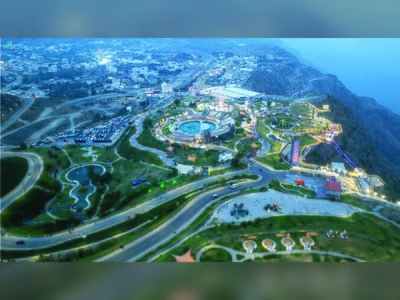
Despite Decline in Arrivals, Migrants Find New Paths to Reach EU
As security measures tighten, the number of people crossing into Europe via irregular means has decreased but not eradicated, with new routes emerging as migrants adapt to increased border controls.
The number of individuals entering Europe through irregular channels has seen a decline of 20% in the first six months of 2025, continuing a downward trend from the previous year.
This reduction, according to Frontex, the EU's border agency, can be attributed to enhanced cooperation with countries along transit routes.
The EU has taken a hard stance on unauthorized entries since the peak of the migrant crisis in 2015 when over one million people arrived in Europe.
However, despite stricter measures, migrants are finding alternative pathways due to their adaptability and reliance on smugglers and newer, potentially riskier routes.
While overall numbers are down, specific entry points across the Mediterranean and at the Greek-Turkish land border remain consistent.
The EU has bolstered North African countries' border capabilities in exchange for preventing migration, leading to a 58% decrease in arrivals through the Central Mediterranean route between North Africa and Italy/Malta in 2024 compared to 2023.
Yet, this shift has contributed to increased activity on routes such as the Atlantic Ocean path from West Africa to the Canary Islands.
Over the past decade, Europe has invested heavily in surveillance systems and border patrols, with Frontex staff deployed at external and internal borders.
The Western Balkan route, which connects Greece to western Europe via the Balkans, has seen detections of irregular crossings drop by 78% from 2023, although this does not reflect a complete cessation of travel.
Instead, it indicates that travelers are opting for more covert methods to avoid detection.
As the EU triples its border spending in the upcoming Multiannual Financial Framework to €81 billion, experts contend that the reactive approach overlooks the inevitability and benefits of migration.
Until regular migration pathways are established, irregular migration is likely to persist.
This reduction, according to Frontex, the EU's border agency, can be attributed to enhanced cooperation with countries along transit routes.
The EU has taken a hard stance on unauthorized entries since the peak of the migrant crisis in 2015 when over one million people arrived in Europe.
However, despite stricter measures, migrants are finding alternative pathways due to their adaptability and reliance on smugglers and newer, potentially riskier routes.
While overall numbers are down, specific entry points across the Mediterranean and at the Greek-Turkish land border remain consistent.
The EU has bolstered North African countries' border capabilities in exchange for preventing migration, leading to a 58% decrease in arrivals through the Central Mediterranean route between North Africa and Italy/Malta in 2024 compared to 2023.
Yet, this shift has contributed to increased activity on routes such as the Atlantic Ocean path from West Africa to the Canary Islands.
Over the past decade, Europe has invested heavily in surveillance systems and border patrols, with Frontex staff deployed at external and internal borders.
The Western Balkan route, which connects Greece to western Europe via the Balkans, has seen detections of irregular crossings drop by 78% from 2023, although this does not reflect a complete cessation of travel.
Instead, it indicates that travelers are opting for more covert methods to avoid detection.
As the EU triples its border spending in the upcoming Multiannual Financial Framework to €81 billion, experts contend that the reactive approach overlooks the inevitability and benefits of migration.
Until regular migration pathways are established, irregular migration is likely to persist.










